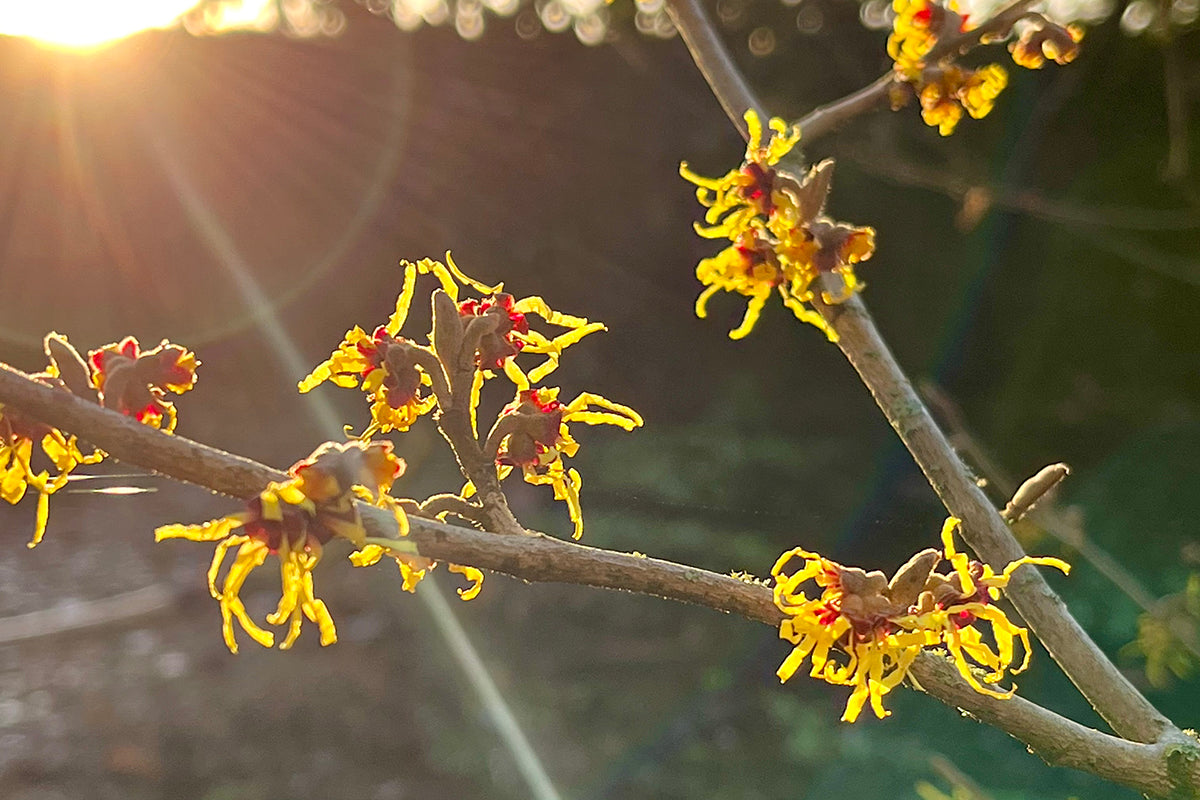Surviving, not thriving

From skin care and sore throats to healing wounds and insect bites, witch hazels (Hamamelis) have been used for centuries as natural remedies or available as over the counter products in health food shops and pharmacies.
In European folklore, witch hazel was sometimes referred to as snapping hazel or pistachio nut tree. It was believed that the branches of witch hazel could be used in divination practices or as dowsing rods to locate water or buried treasure. Some European traditions held that witch hazel had protective qualities and could ward off malevolent spirits or curses.
Further afield in native American folklore, witch hazel is associated with healing and protection. Some tribes believed that the branches of the witch hazel tree could ward off evil spirits, and the bark and leaves were used in various medicinal remedies for ailments ranging from cuts and bruises to colds and fevers.
Back at Genus HQ we don’t use Hamamelis in these ways but always like to have one or two examples in the garden to give us some early colour in the woodland or anywhere where a splash of excitement is required. On a warm day its sweet, spicy scent can be picked up some distance down wind and visitors never fail to stoop down to catch the fragrance from the unusual flowers that resemble gathered shreds of citrus zest.
We have to come clean - our limey Cotswold soil is not ideal for these plants and we rarely see great examples flourishing in other nearby gardens. On the whole ours survive but don’t thrive. Only where a band of clay, or an inexplicable pocket of neutral to acid soil occurs, do they really show their real beauty.
Coming in a range of colours from yellow to orange, reds and pinks they flower from December onwards fighting the hellebores, narcissi, and snowdrops for attention. Any gardener wishing to add this interesting genus to their garden would do well to visit the national collection held by Chris Lane near Sittingbourne in Kent. Those unable to visit can peruse the RHS Plant Finder where around 100 different species and cultivars are available. ‘Pallida’, ‘Arnold Promise’, ‘Diane’, and ‘Aphrodite’ are popular well-known choices but with so many to choose from it would be very easy to get drawn in and start collecting these beguiling shrubs that can cope with any of the weathers our British winters can throw at them.







